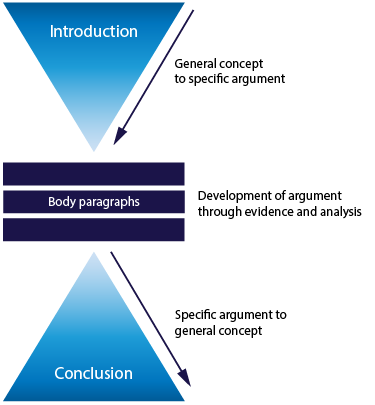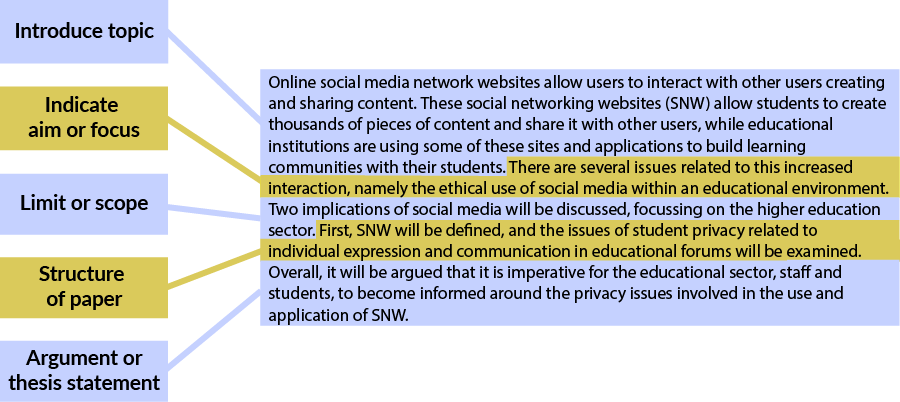While there are different types of written assignments, most academic writing has a similar structure comprising of:
- Introduction—acts as a roadmap for the reader.
- Body—presents points to support your argument.
- Conclusion—summarises main points discussed.

Writing assignments
The library offers Writing assignments workshops. If you have missed one or unable to attend you can watch our video.
There is a range of workshops offered throughout the year, register now to improve your skills.
The introduction helps your reader understand where you’re going in your assignment, how you will get there and what they will see along the way.
An introduction should include:
- topic sentence—outline the most important concepts relevant to answering the question
- aim—indicate the focus or purpose of the assignment
- scope—mention any limits of your assignment. What will you emphasise? Will you intentionally leave anything out?
- structure—signal how you will present information in the assignment, and the order the key points will appear
- thesis statement—clearly identify your argument.

The body consists of paragraphs structured to reflect your critical thinking about the question and the chosen order for presenting your argument.
Each paragraph should include:
- topic sentence—starts each paragraph and expresses the main idea of the paragraph
- evidence and examples—contains explanations to support the key point of the paragraph. Supporting evidence is used to justify, explain or develop your argument.
- concluding sentence—links the main idea of the paragraph back to your argument and to the assignment topic.
The number of paragraphs in your essay will depend upon the length of your essay, and the number of points you wish to argue.

The conclusion comes at the end of your assignment, summarising the main points discussed.
Importantly, your conclusion should:
- contain no new ideas or information
- briefly list your key points
- relate main points directly back to the question or argument.
You might also make future recommendations, evaluate your argument or forecast patterns of change.

Academic integrity
Understand your academic integrity obligations and responsibilities to act in an honest and ethical manner.
Ask the library
We are here to help!
Find us in the libraries or contact us by phone or online.
Workshops
We offer online workshops on researching, referencing, structuring assignments and exam preparation. Come along and improve your skills!
Peer assisted study sessions
Attend a student facilitated group study session.
Griffith mentors study support
Get study support by connecting with a Griffith student mentor.